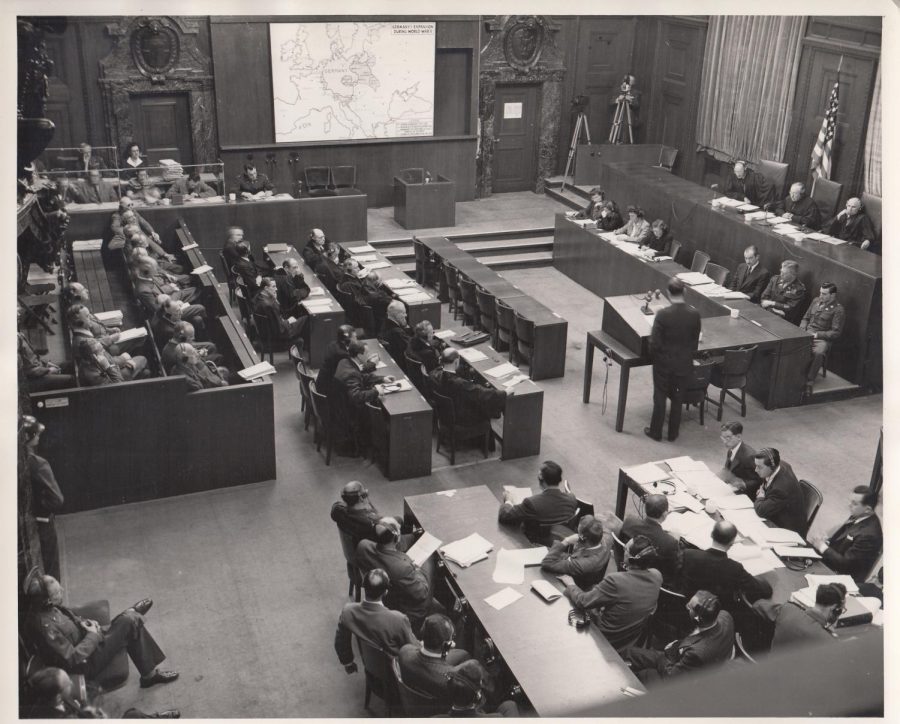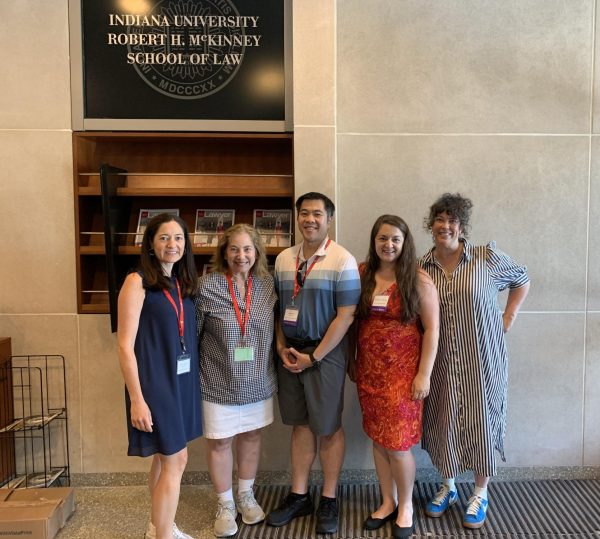Opinion: Remember the Nuremberg Indictment
In Spring 1945, the Allied powers—the United Kingdom, the United States, and the Soviet Union, plus newly-freed France—defeated Nazi Germany.
The Nazis were World War II’s aggressors. They attacked neighboring nations. They threw Europe into years of war, suffering, torture, death and devastation.
By May 1945, the Nazis were militarily destroyed. They surrendered to the Allies unconditionally. The Allies occupied what had been Germany. Nazi leaders who were not dead or missing became Allied prisoners.
The Allies then created a legal process to hold these perpetrators accountable for their war crimes.
On Aug. 8, 1945, the Allied nations signed the historic London Agreement. It created the International Military Tribunal, the world’s first international criminal court. The Agreement defined the IMT’s jurisdiction. The court would try Nazi individuals and organizations that had violated international law—existing treaties and norms—by planning and committing aggression, war crimes, and crimes against humanity.
The Allied nations then appointed their IMT judges. Allied legal personnel, led by U.S. chief prosecutor (and sitting U.S. Supreme Court justice) Robert H. Jackson, moved into what had been, pre-surrender, Nazi Germany. Their base was Nuremberg, located in the U.S. occupation zone. They prepared Nuremberg’s courthouse to be the trial site.
Allied lawyers also drafted, and then each Allied government approved, a lengthy indictment charging 24 former Nazi leaders and six Nazi organizations with international crimes.
On Oct. 18, 1945, the IMT convened for the first time. To signify the Soviet Union’s stature in this alliance endeavor, the IMT met on that day in Berlin, located in the Soviet occupation zone.
The U.S.S.R. judge, General Iona Nikitchenko, served as presiding judge for this session. The U.K. chief prosecutor, Hartley Shawcross, announced that the chief prosecutor from each nation had agreed to a criminal indictment. Prosecutors from the Soviet Union, France, and the U.S. then each lodged with the IMT a Russian, French, and English language version, respectively, of the indictment. General Nikitchenko read the defendants’ names. He announced that each would be served with the indictment and, thereafter, have 30 days to secure counsel and prepare to defend himself at trial.
Today, as the world watches and responds to Russia’s military aggression against Ukraine, it should recall particulars of Nazi crimes in Ukraine that were charged in that 1945 indictment—what we call the Nuremberg indictment.
And the world today should recall that those charges were drafted and then prosecuted successfully by Allied governments that included the Soviet Union, which today’s Russian Federation celebrates for winning World War II (the Great Patriotic War) and for prosecuting Nazi war criminals at Nuremberg.
In particular, note these aspects of the Nuremberg indictment:
Count One, charging common plan or conspiracy, focused in paragraph 6 on the crime of the “German invasion on 22 June 1941, of the U.S.S.R. territory in violation of Non-Aggression Pact of 23 August 1939.”
This paragraph specified the crime of aggressive war: “On 22 June 1941 the Nazi conspirators deceitfully denounced the Non-Aggression Pact between Germany and the U.S.S.R. and without any declaration of war invaded Soviet territory thereby beginning a War of Aggression against the U.S.S.R.”
The paragraph went on to describe the human toll: “From the first day of launching their attack on Soviet territory the Nazi conspirators, in accordance with their detailed plans, began to carry out the destruction of cities, towns, and villages, the demolition of factories, collective farms, electric stations, and railroads, the robbery and barbaric devastation of the natural cultural institutions of the peoples of the U.S.S.R., the devastation of museums, schools, hospitals, churches, and historic monuments, the mass deportation of the Soviet citizens for slave labor to Germany, as well as the annihilation of adults, old people, women and children, especially Bielorussians and Ukrainians, and the extermination of Jews committed throughout the occupied territory of the Soviet Union.”
This paragraph concluded by stating the responsibility of those who issued the orders: “The above mentioned criminal offenses were perpetrated by the German troops in accordance with the orders of the Nazi Government and the General Staff and High Command of the German armed forces.”
Count Three, charging war crimes, described Nazi actions that all occurred, unless otherwise specified, in what today is Ukraine:
“In the Lwow [today’s Lviv] region and in the city of Lwow the Germans exterminated about 700,000 Soviet people, including 70 persons in the field of the arts, science, and technology, and also citizens of the United States of America, Great Britain, Czechoslovakia, Yugoslavia, and Holland, brought to this region from other concentration camps.
In the Jewish ghetto from 7 September 1941 to 6 July 1943, over 133,000 persons were tortured and shot.
Mass shooting of the population occurred in the suburbs of the city and in the Livenitz forest [today’s Lysynychi Forest, about 10 kilometers west of Lviv].
In the Soviet Ukraine there were monstrous criminal acts of the Nazi conspirators. In Babi Yar, near Kiev, they shot over 100,000 men, women, children, and old people. In this city in January 1942, after the explosion in German Headquarters on Dzerzhinsky Street the Germans arrested as hostages 1,250 persons—old men, minors, women with nursing infants. In Kiev they killed over 195,000 persons.
In Rovno and the Rovno region they killed and tortured over 100,000 peaceful citizens.
In Dnepropetrovsk, near the Transport Institute, they shot or threw alive into a great ravine 11,000 women, old men, and children.
In Kamenetz-Podolsk Region 31,000 Jews were shot and exterminated, including 13,000 persons brought there from Hungary.
In the Odessa Region at least 200,000 Soviet citizens were killed.
In Kharkov about 195,000 persons were either tortured to death, shot, or gassed in gas vans.
…
Along with adults the Nazi conspirators mercilessly destroyed even children. They killed them with their parents, in groups, and alone. They killed them in children’s homes and hospitals, burying the living in the graves, throwing them into flames, stabbing them with bayonets, poisoning them, conducting experiments upon them, extracting their blood for the use of the German Army, throwing them into prison and Gestapo torture chambers and concentration camps, where the children died from hunger, torture, and epidemic diseases.”
Count Four, charging crimes against humanity, specified numbers of Jews whom Nazis murdered in specific locations in Ukraine:
“20,000 Jews were shot at Lutsk.
32,000 Jews were shot at Sarny.
60,000 Jews were shot at Kiev and Dniepropetrovsk.”
***
At the 1945-1946 Nuremberg trial, Russians and other Allied prosecutors proved these international crimes—Russian and other judges held that these charged acts were criminal, and that the evidence demonstrated defendants’ guilt beyond a reasonable doubt.
The Nuremberg precedent stands tall today. The international community should see it, clearly. And when the world has the power to do so, it should follow the precedent to hold today’s Russian criminals legally accountable for conduct that mirrors the Nazi crimes that they prosecuted after World War II.
John Q. Barrett is the Benjamin N. Cardozo Professor of Law at St. John’s, writes The Jackson List blog, and is writing a biography of Nuremberg prosecutor Robert H. Jackson. The New York Law Journal published this piece originally on March 29, 2022.









